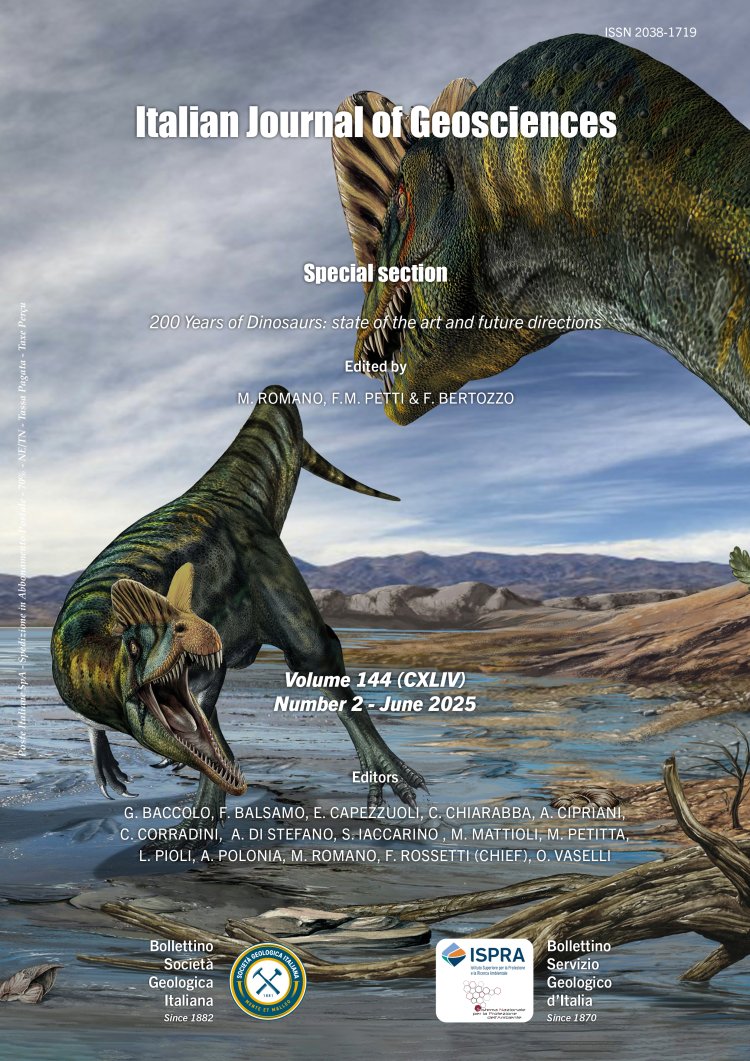

Beyond the Stromer’s Riddle: the impact of lumping and splitting hypotheses on the systematics of the giant predatory dinosaurs from northern Africa
Andrea Cau1 & Alessandro Paterna2
1unaffiliated, Parma, Italy.
2Ophis Museo Paleontologico e Centro Erpetologico, Teramo, Italy.
Corresponding author e-mail: cauand@gmail.com
Volume: 144 (2025) f.2
Pages: 162-185
Abstract
The “mid-Cretaceous” record from northern Africa is characterised by a peculiar fauna of theropod dinosaurs, mostly referred to a “triumvirate” of clades: Abelisauroidea, Allosauroidea and Spinosauridae. The majority of this material is based on unassociated bones and has ignited a debate on the validity and inclusiveness of the named species, between “lumping” and “splitting” approaches. Although this debate has mostly focused on the alpha taxonomy, the impact of minimising the a priori assumptions on the diversity and inclusiveness of the taxa coded in the numerical analyses (“methodological splitting”) has barely been investigated. Here, we use new theropod material from the “Kem Kem beds” (Morocco) to test the “methodological splitting” approach on theropod phylogenetics. Revision of the theropod material from the Bahariya Formation (Egypt) described by Ernst Stromer in 1934 leads us to consider the Moroccan Deltadromeus as a junior synonym of Bahariasaurus.
Using a large-scale phylogenetic analysis integrating ontogenetic information, all Kem Kem material results nested in the three lineages of the “triumvirate”. The “noasaurids” are reconstructed as a paraphyletic grade of Abelisauroidea, with Bahariasaurus as the largest representative and related to non-predatory taxa showing several convergences with the ornithomimosaurs. Kryptops palaios hypodigm is confirmed an abelisaurid-allosauroid chimaera. Our analysis also indicates that Eocarcharia dinops hypodigm is a spinosaurid-allosauroid chimaera, and supports recent suggestions for the exclusion of Carcharodontosaurus iguidensis from the latter genus. The Egyptian carcharodontosaurid specimen described by Ernst Stromer and recently renamed Tameryraptor markgrafi is reconstructed as sister taxon of Carcharodontosaurus saharicus neotype even following the updated coding of its morphology. A couple of fused frontals shows several similarities with the holotype of the enigmatic carcharodontosaurid Sauroniops but is less robustly built despite the comparable size. The “mid-Cretaceous” northern African theropod diversity cannot be resolved following “splitting” or “lumping” aprioristic approaches. Direct overlap of diagnostic elements is the only valid criterion for lumping non-associated material.
In the absence of overlap in the sample, hypodigms based on “methodological splitting” should be preferred because they prevent topological artifacts biased by the unrecognised inclusion of chimaeras in the taxon sample.
Keywords
Get Full Text